
AiDE
AiDE provides a structured approach to developing projects with AI assistance. It creates a standardized way for AI to understand your project context and maintain documentation.
Stars: 56
AiDE is a lightweight framework for structuring AI-assisted development. It standardizes project context management, documentation, and collaboration, ensuring the assistant stays informed and productive throughout the project lifecycle. It offers drop-in simplicity with no dependencies, versatile usage for new and existing projects, and standardized templates for roadmaps, tasks, decisions, and sessions. The framework helps track project state, decision records, task management, and session tracking. It encourages best practices like starting each session by reviewing `.context` files, tracking task completion, documenting key decisions, and recording session summaries. The folder structure includes files for current state, roadmap, tasks, decisions, and sessions, with specific directories for active, completed, hold, and planned tasks. Contributions are welcome to enhance the usability of `.context`, and optional global rules for AI assistants are provided to optimize integration with the framework.
README:
The AiDE framework is a lightweight, drop-in solution for structuring AI-assisted development. It standardizes project context management, documentation, and collaboration, ensuring your assistant stays informed and productive throughout the project lifecycle.
⚠ Disclaimer
Some AI-powered code assistants have predefined token limits that could be quickly consumed when reading or writing to.contextfiles. While this framework has proven tremendously helpful, developers should be aware of these limitations. Using it with code assistants that leverage your own API keys can help avoid the stricter token limits imposed by some platforms.
-
Drop-in simplicity: No dependencies or configuration required. Just drop the
.contextfolder into your project. -
Versatile usage:
- New projects: Use your AI assistant or the AiDE Planning Assistant GPT to generate an initial roadmap, tasks, and documentation.
-
Existing projects: Let the assistant analyze your codebase and update the
.contextfiles to reflect the current state.
- Standardized structure: Organized templates for roadmaps, tasks, decisions, and sessions.
-
Project State
-
current_state.mdtracks active features, technical state, and recent changes. - AI keeps this updated as you work.
- Always know where your project stands.
-
-
Decision Records
- Document architectural decisions in
decisions/. - Track context, consequences, and validation.
- Build institutional knowledge.
- Document architectural decisions in
-
Task Management
- Track tasks in
tasks/. - AI helps manage priorities and progress.
- Keep development focused.
- Track tasks in
-
Session Tracking
- Record session summaries in
sessions/. - Track changes, decisions, and next steps.
- Maintain development continuity.
- Record session summaries in
- Start with the AiDE Planning Assistant GPT here. For those who wish to create their own version, the base prompt is included in in AiDE_Planning_Assistant_GPT.md.
- Use it to brainstorm and generate a
planning_doc.mdfor your project. - Save the
planning_doc.mdin the project root. - Instruct your AI code assistant to:
- Read the
planning_doc.md. - Generate and populate the
.contextfiles (e.g., roadmap, tasks, decisions).
- Read the
- Drop the
.contextfolder into your project’s root directory. - Instruct your AI assistant to:
- Analyze the codebase.
- Update
current_state.mdwith the technical state, features, and recent changes. - Populate or update
roadmap.mdand any relevant tasks or decisions.
-
Start every session: Begin each chat session by asking your AI assistant to review the files in
.context. -
Task completion: When completing a task, ask the assistant to:
- Move the task to
.context/tasks/completed/. - Update related files (e.g., current state, roadmap).
- Move the task to
-
Track decisions: Document key decisions in
.context/decisions/and reference them for future guidance. -
Session summaries: Record discussions and outcomes in
.context/sessions/to maintain continuity.
.context/
├── current_state.md # Overview of the project's current state
├── roadmap.md # High-level goals and milestones
├── tasks/ # Organized task management
│ ├── TEMPLATE.md # Task template
│ ├── active/ # Active tasks
│ ├── completed/ # Completed tasks
│ ├── hold/ # Tasks on hold
│ └── planned/ # Planned tasks
├── decisions/ # Key decision logs
│ └── TEMPLATE.md # Decision log template
└── sessions/ # Collaborative session logs
└── TEMPLATE.md # Session log template
We welcome contributions! Feel free to suggest improvements or submit templates that enhance the usability of .context.
If your AI assistant supports global rules or instructions that persist across all chats or sessions, consider using the following set of rules to optimize its integration with the .context framework:
1. **Context Awareness**:
- Always prioritize the `.context` folder for understanding project details.
- At the start of every session, load and analyze the latest files from the `.context` directory:
- `current_state.md`
- `roadmap.md`
- All files under `.context/tasks/`, `.context/decisions/`, and `.context/sessions/`.
2. **File Management**:
- Update the `.context` files proactively when tasks are completed, new milestones are set, or decisions are made.
- Ensure that all updates to `.context` files are well-documented and aligned with the project state.
3. **Task Workflow**:
- When marking a task as complete:
- Move its entry to `.context/tasks/completed/`.
- Cross-reference related tasks and update their statuses or details if needed.
- Use the templates in `.context/tasks/TEMPLATE.md` for any new tasks.
4. **Decision Tracking**:
- Record any significant architectural or strategic decisions in `.context/decisions/`.
- Refer back to these decisions when suggesting solutions or changes to avoid contradictions.
5. **Session Management**:
- Document collaborative sessions or discussions in `.context/sessions/` using the provided template.
- Include a summary of outcomes, action items, and any new tasks or changes to the roadmap.
6. **Roadmap and Current State**:
- Keep `current_state.md` up to date with key project milestones, challenges, and recent progress.
- Suggest updates to the `roadmap.md` when significant shifts in project goals or timelines occur.
7. **Consistency and Communication**:
- Use language that is clear and concise when updating `.context` files.
- If the developer requests clarification or context, refer explicitly to the `.context` files.
- Suggest best practices for maintaining `.context` when gaps or inconsistencies are identified.
8. **Error Handling**:
- If the `.context` folder is incomplete or missing expected files, provide actionable suggestions to generate or recover the necessary files.
- Proactively generate boilerplate content for missing files, e.g., suggest creating an initial `roadmap.md` for new projects.
9. **Adaptability**:
- Adjust suggestions and output based on the specific needs and state of the project as reflected in `.context`.
Implementing these rules ensures the assistant operates effectively, maintains consistency, and reduces the effort required to manage project context.
For Tasks:
Click tags to check more tools for each tasksFor Jobs:
Alternative AI tools for AiDE
Similar Open Source Tools
AiDE
AiDE is a lightweight framework for structuring AI-assisted development. It standardizes project context management, documentation, and collaboration, ensuring the assistant stays informed and productive throughout the project lifecycle. It offers drop-in simplicity with no dependencies, versatile usage for new and existing projects, and standardized templates for roadmaps, tasks, decisions, and sessions. The framework helps track project state, decision records, task management, and session tracking. It encourages best practices like starting each session by reviewing `.context` files, tracking task completion, documenting key decisions, and recording session summaries. The folder structure includes files for current state, roadmap, tasks, decisions, and sessions, with specific directories for active, completed, hold, and planned tasks. Contributions are welcome to enhance the usability of `.context`, and optional global rules for AI assistants are provided to optimize integration with the framework.
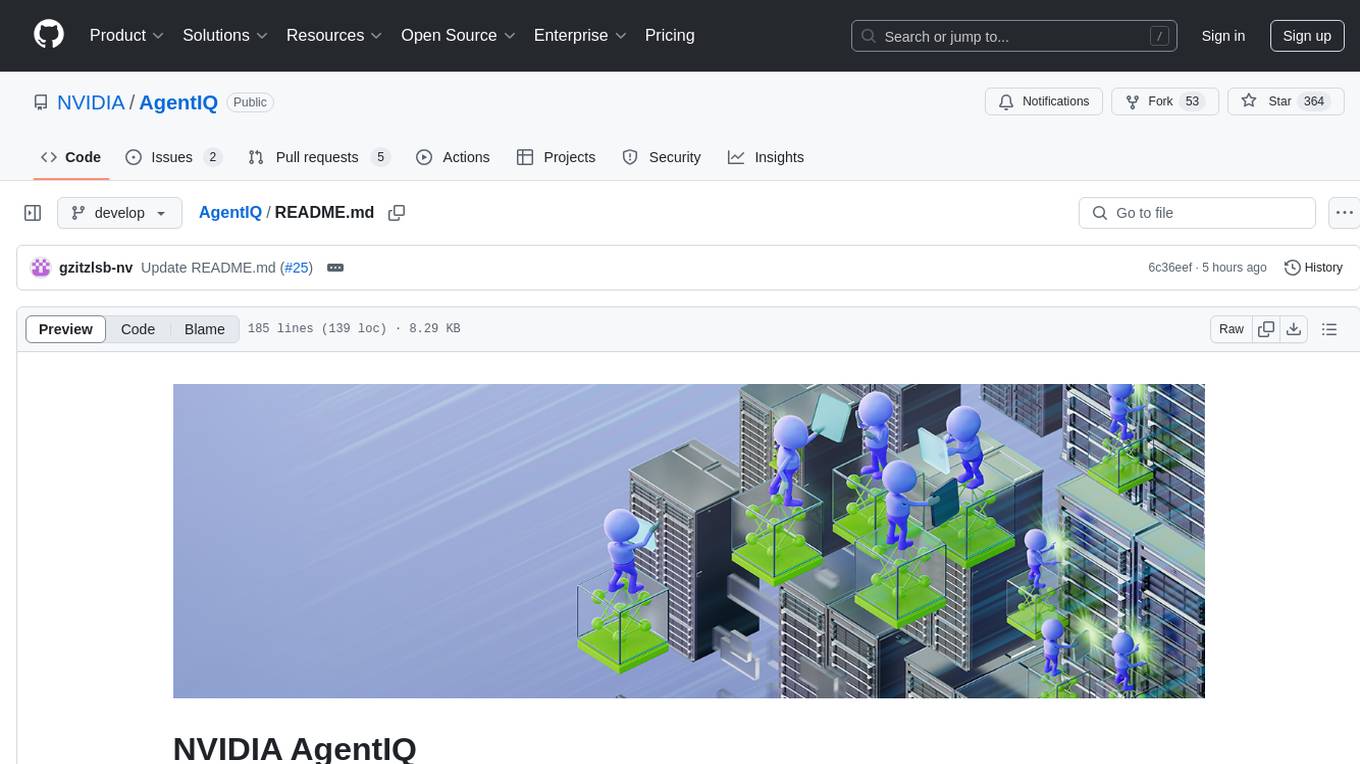
AgentIQ
AgentIQ is a flexible library designed to seamlessly integrate enterprise agents with various data sources and tools. It enables true composability by treating agents, tools, and workflows as simple function calls. With features like framework agnosticism, reusability, rapid development, profiling, observability, evaluation system, user interface, and MCP compatibility, AgentIQ empowers developers to move quickly, experiment freely, and ensure reliability across agent-driven projects.

cognita
Cognita is an open-source framework to organize your RAG codebase along with a frontend to play around with different RAG customizations. It provides a simple way to organize your codebase so that it becomes easy to test it locally while also being able to deploy it in a production ready environment. The key issues that arise while productionizing RAG system from a Jupyter Notebook are: 1. **Chunking and Embedding Job** : The chunking and embedding code usually needs to be abstracted out and deployed as a job. Sometimes the job will need to run on a schedule or be trigerred via an event to keep the data updated. 2. **Query Service** : The code that generates the answer from the query needs to be wrapped up in a api server like FastAPI and should be deployed as a service. This service should be able to handle multiple queries at the same time and also autoscale with higher traffic. 3. **LLM / Embedding Model Deployment** : Often times, if we are using open-source models, we load the model in the Jupyter notebook. This will need to be hosted as a separate service in production and model will need to be called as an API. 4. **Vector DB deployment** : Most testing happens on vector DBs in memory or on disk. However, in production, the DBs need to be deployed in a more scalable and reliable way. Cognita makes it really easy to customize and experiment everything about a RAG system and still be able to deploy it in a good way. It also ships with a UI that makes it easier to try out different RAG configurations and see the results in real time. You can use it locally or with/without using any Truefoundry components. However, using Truefoundry components makes it easier to test different models and deploy the system in a scalable way. Cognita allows you to host multiple RAG systems using one app. ### Advantages of using Cognita are: 1. A central reusable repository of parsers, loaders, embedders and retrievers. 2. Ability for non-technical users to play with UI - Upload documents and perform QnA using modules built by the development team. 3. Fully API driven - which allows integration with other systems. > If you use Cognita with Truefoundry AI Gateway, you can get logging, metrics and feedback mechanism for your user queries. ### Features: 1. Support for multiple document retrievers that use `Similarity Search`, `Query Decompostion`, `Document Reranking`, etc 2. Support for SOTA OpenSource embeddings and reranking from `mixedbread-ai` 3. Support for using LLMs using `Ollama` 4. Support for incremental indexing that ingests entire documents in batches (reduces compute burden), keeps track of already indexed documents and prevents re-indexing of those docs.
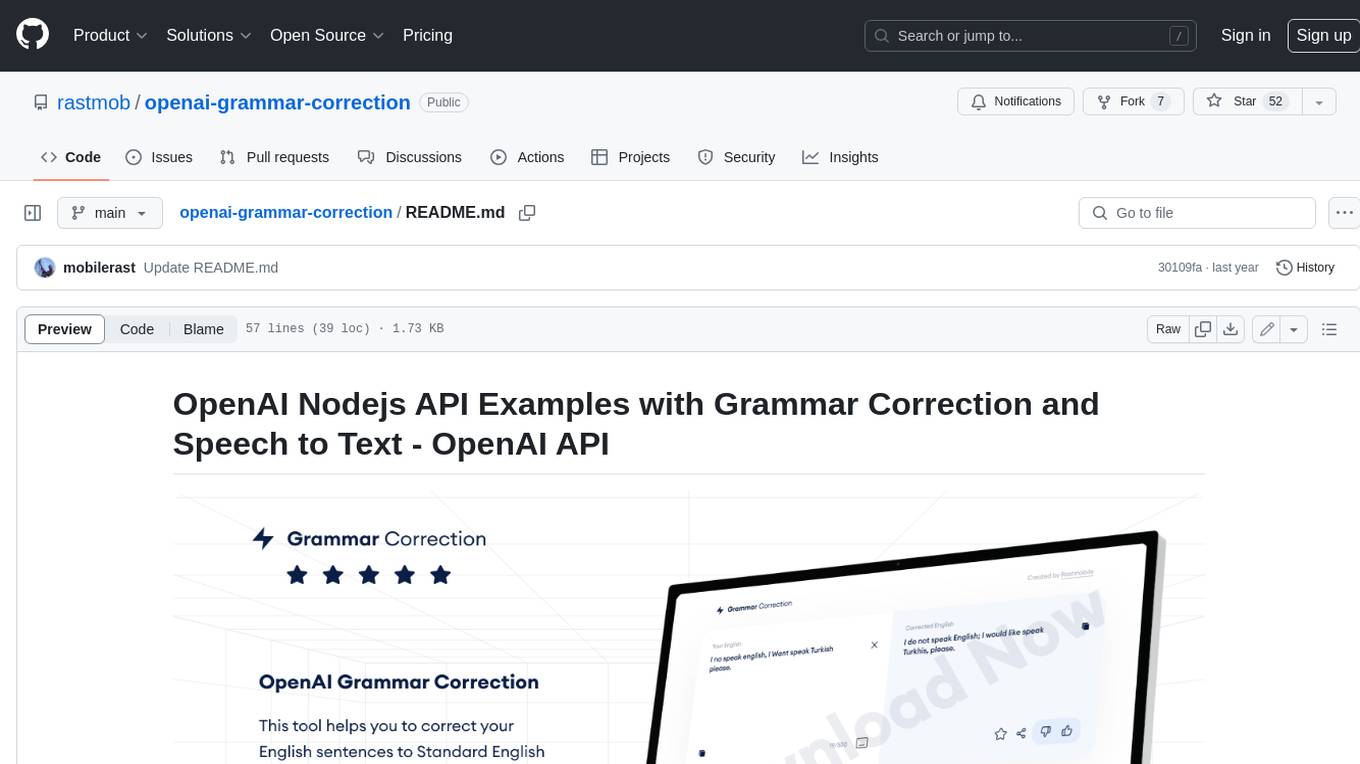
openai-grammar-correction
This project is a Node.js API example that utilizes the OpenAI API for grammar correction and speech-to-text conversion. It helps users correct their English sentences to standard English by leveraging the capabilities of the OpenAI API. The project consists of two applications: Angular and Node.js. Users can follow the installation steps to set up the project in their environment and utilize the OpenAI implementation to correct English sentences. The project also provides guidelines for contribution and support.
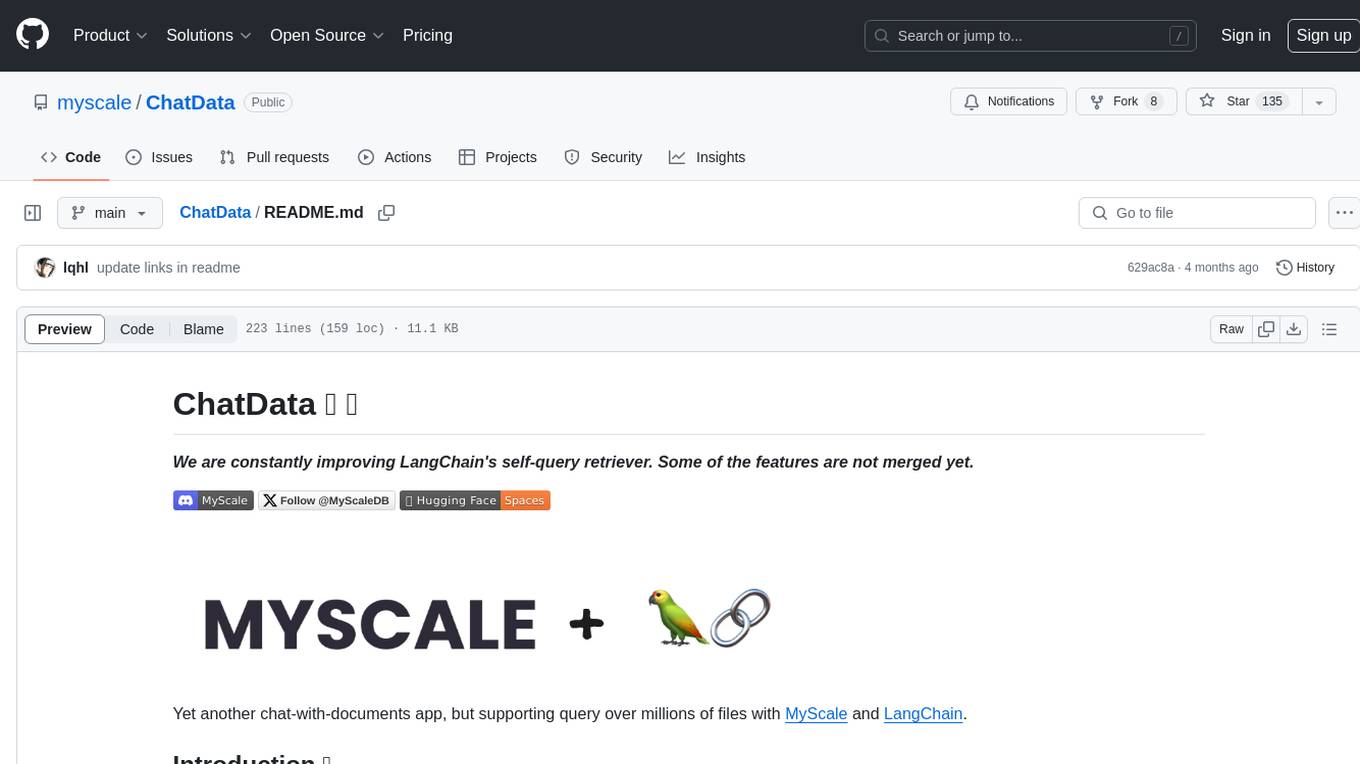
ChatData
ChatData is a robust chat-with-documents application designed to extract information and provide answers by querying the MyScale free knowledge base or uploaded documents. It leverages the Retrieval Augmented Generation (RAG) framework, millions of Wikipedia pages, and arXiv papers. Features include self-querying retriever, VectorSQL, session management, and building a personalized knowledge base. Users can effortlessly navigate vast data, explore academic papers, and research documents. ChatData empowers researchers, students, and knowledge enthusiasts to unlock the true potential of information retrieval.
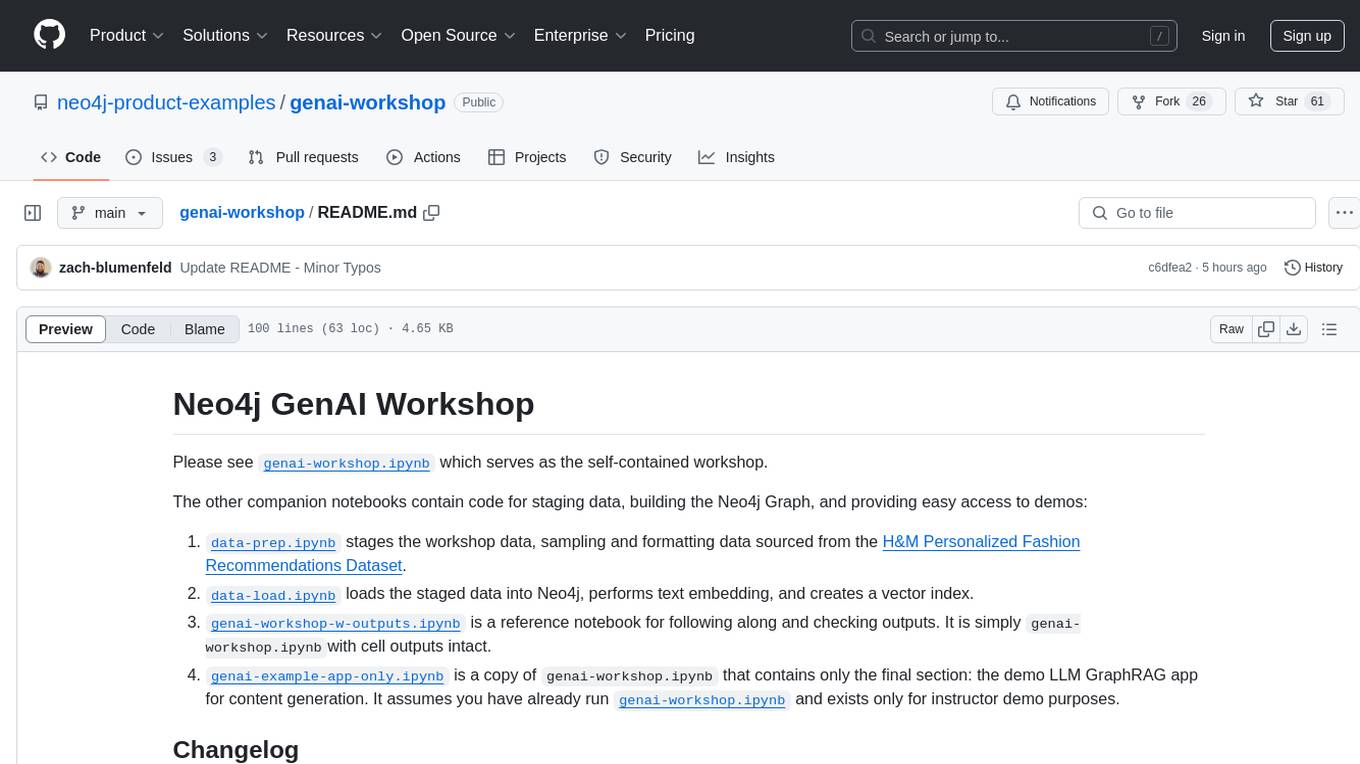
genai-workshop
The Neo4j GenAI Workshop repository contains notebooks for a workshop focusing on building a Neo4j Graph, text embedding, and providing demos for content generation. The workshop includes data staging, loading, and exploration using Cypher queries. It also covers improvements in LLM response quality, GPT-4 usage, and vector search speed. The repository has undergone multiple updates to enhance course quality, simplify content, and provide better explainers and examples.
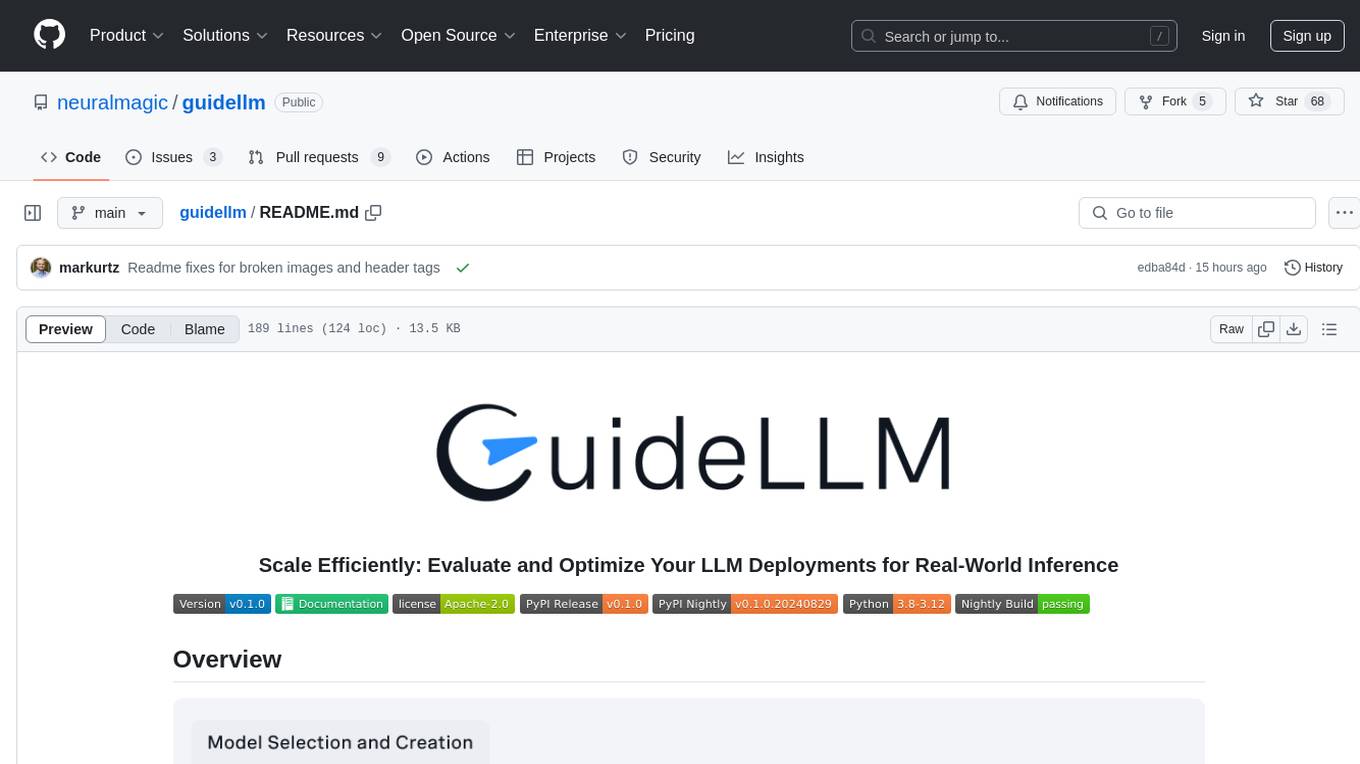
guidellm
GuideLLM is a powerful tool for evaluating and optimizing the deployment of large language models (LLMs). By simulating real-world inference workloads, GuideLLM helps users gauge the performance, resource needs, and cost implications of deploying LLMs on various hardware configurations. This approach ensures efficient, scalable, and cost-effective LLM inference serving while maintaining high service quality. Key features include performance evaluation, resource optimization, cost estimation, and scalability testing.
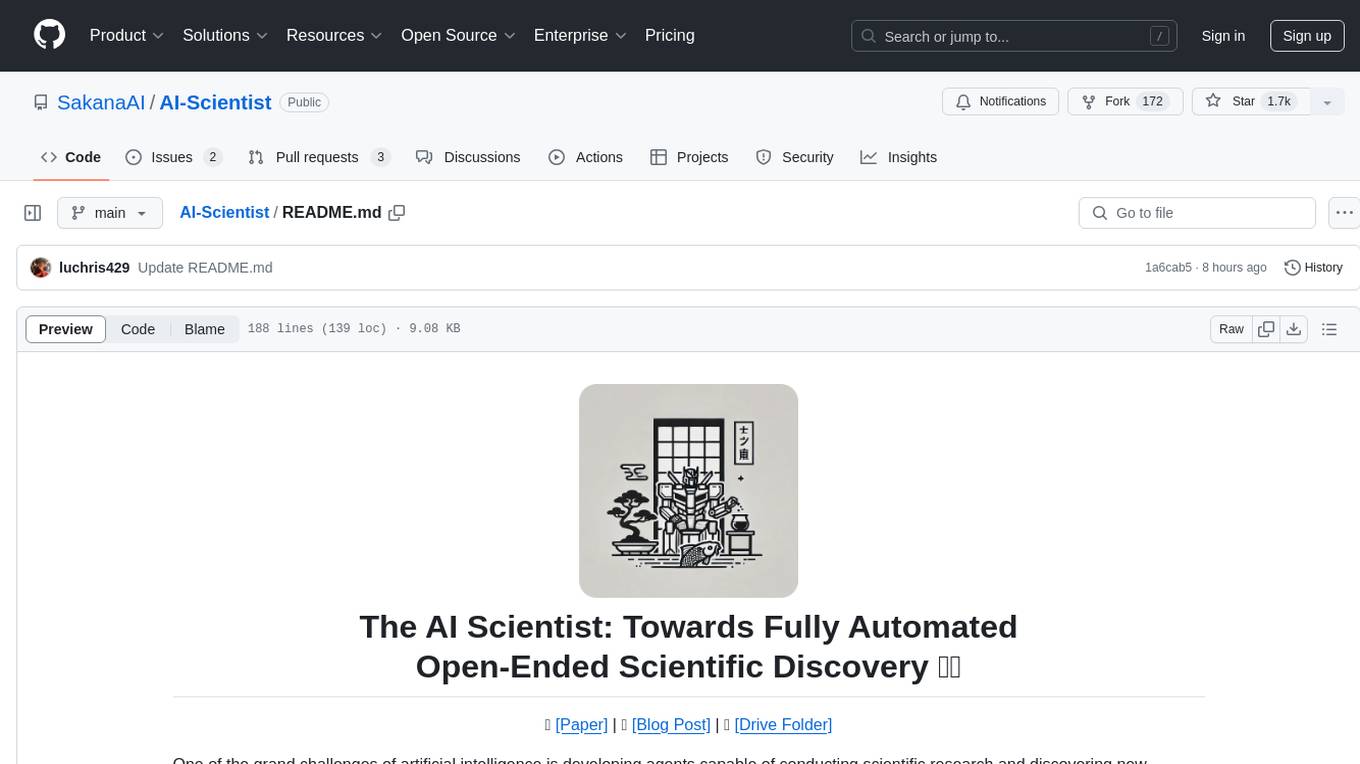
AI-Scientist
The AI Scientist is a comprehensive system for fully automatic scientific discovery, enabling Foundation Models to perform research independently. It aims to tackle the grand challenge of developing agents capable of conducting scientific research and discovering new knowledge. The tool generates papers on various topics using Large Language Models (LLMs) and provides a platform for exploring new research ideas. Users can create their own templates for specific areas of study and run experiments to generate papers. However, caution is advised as the codebase executes LLM-written code, which may pose risks such as the use of potentially dangerous packages and web access.
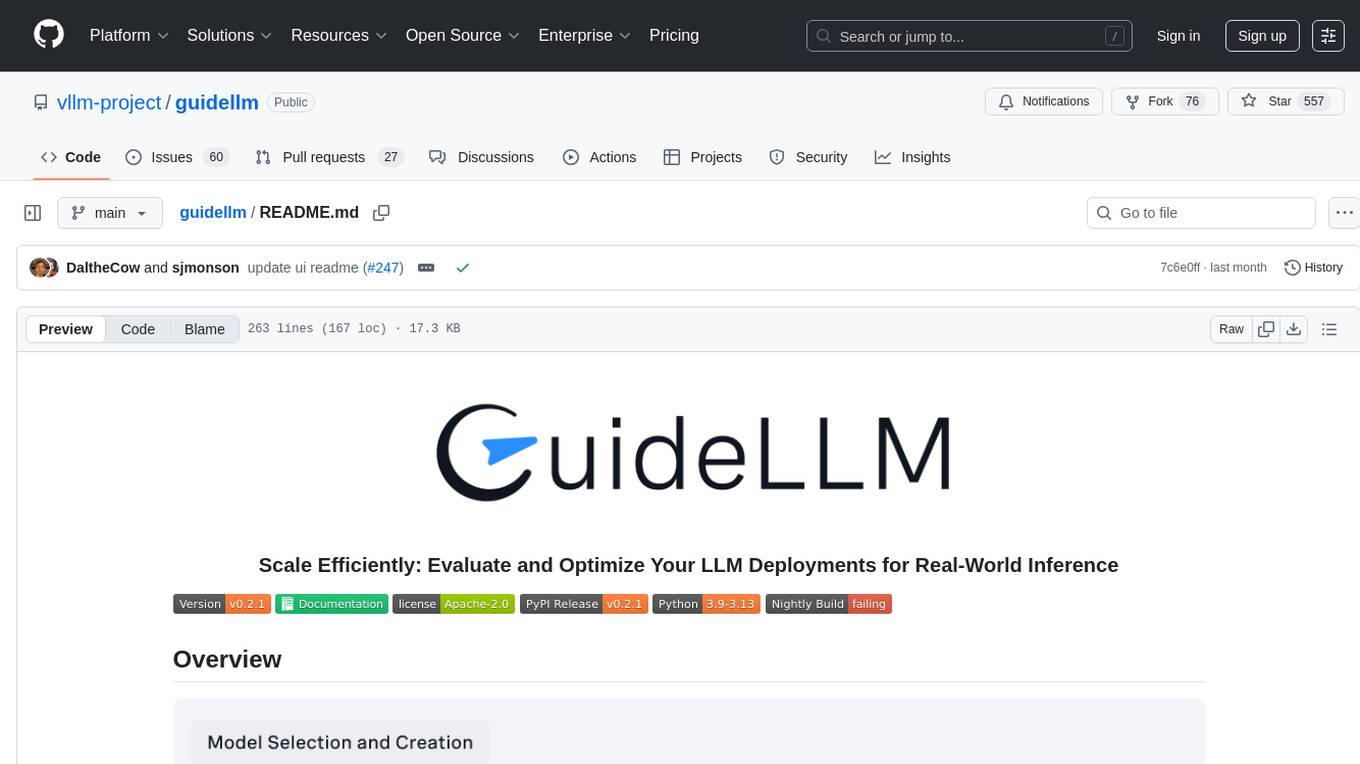
guidellm
GuideLLM is a platform for evaluating and optimizing the deployment of large language models (LLMs). By simulating real-world inference workloads, GuideLLM enables users to assess the performance, resource requirements, and cost implications of deploying LLMs on various hardware configurations. This approach ensures efficient, scalable, and cost-effective LLM inference serving while maintaining high service quality. The tool provides features for performance evaluation, resource optimization, cost estimation, and scalability testing.
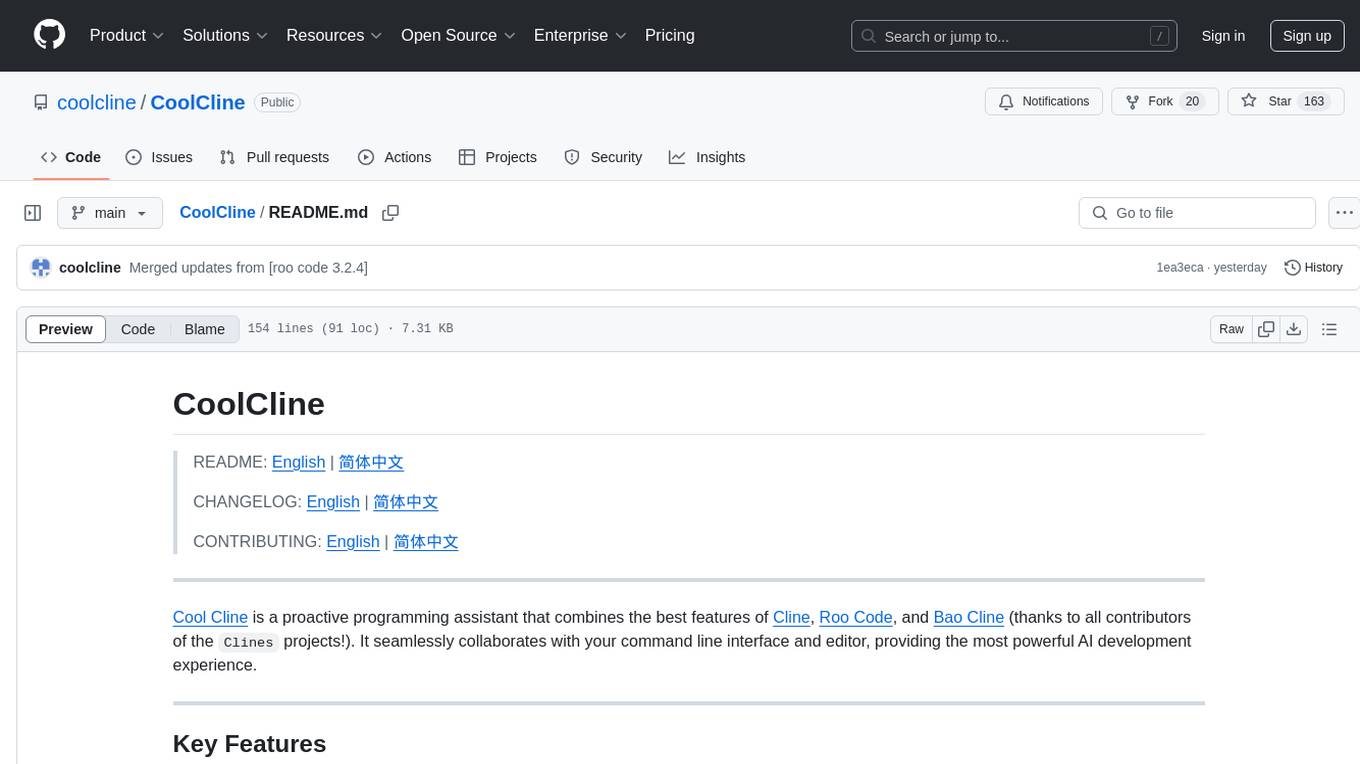
CoolCline
CoolCline is a proactive programming assistant that combines the best features of Cline, Roo Code, and Bao Cline. It seamlessly collaborates with your command line interface and editor, providing the most powerful AI development experience. It optimizes queries, allows quick switching of LLM Providers, and offers auto-approve options for actions. Users can configure LLM Providers, select different chat modes, perform file and editor operations, integrate with the command line, automate browser tasks, and extend capabilities through the Model Context Protocol (MCP). Context mentions help provide explicit context, and installation is easy through the editor's extension panel or by dragging and dropping the `.vsix` file. Local setup and development instructions are available for contributors.
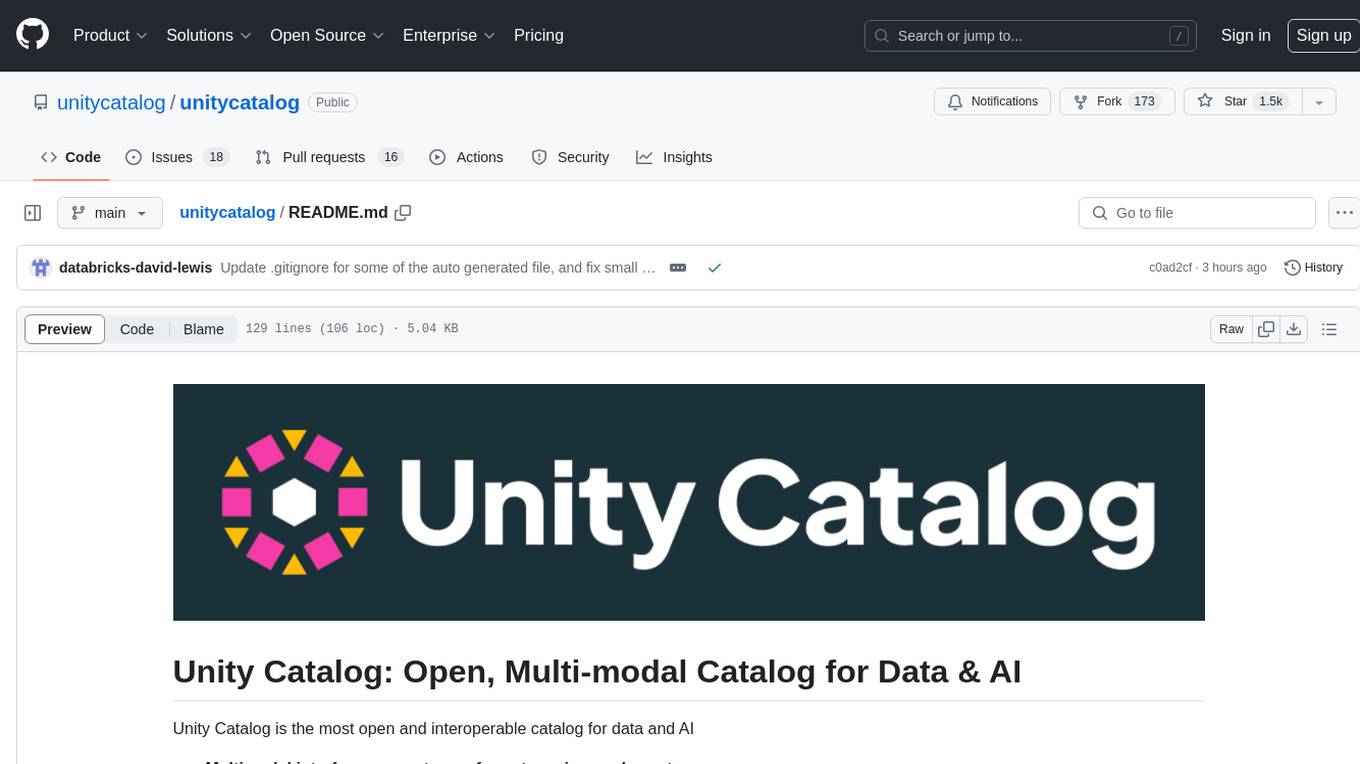
unitycatalog
Unity Catalog is an open and interoperable catalog for data and AI, supporting multi-format tables, unstructured data, and AI assets. It offers plugin support for extensibility and interoperates with Delta Sharing protocol. The catalog is fully open with OpenAPI spec and OSS implementation, providing unified governance for data and AI with asset-level access control enforced through REST APIs.
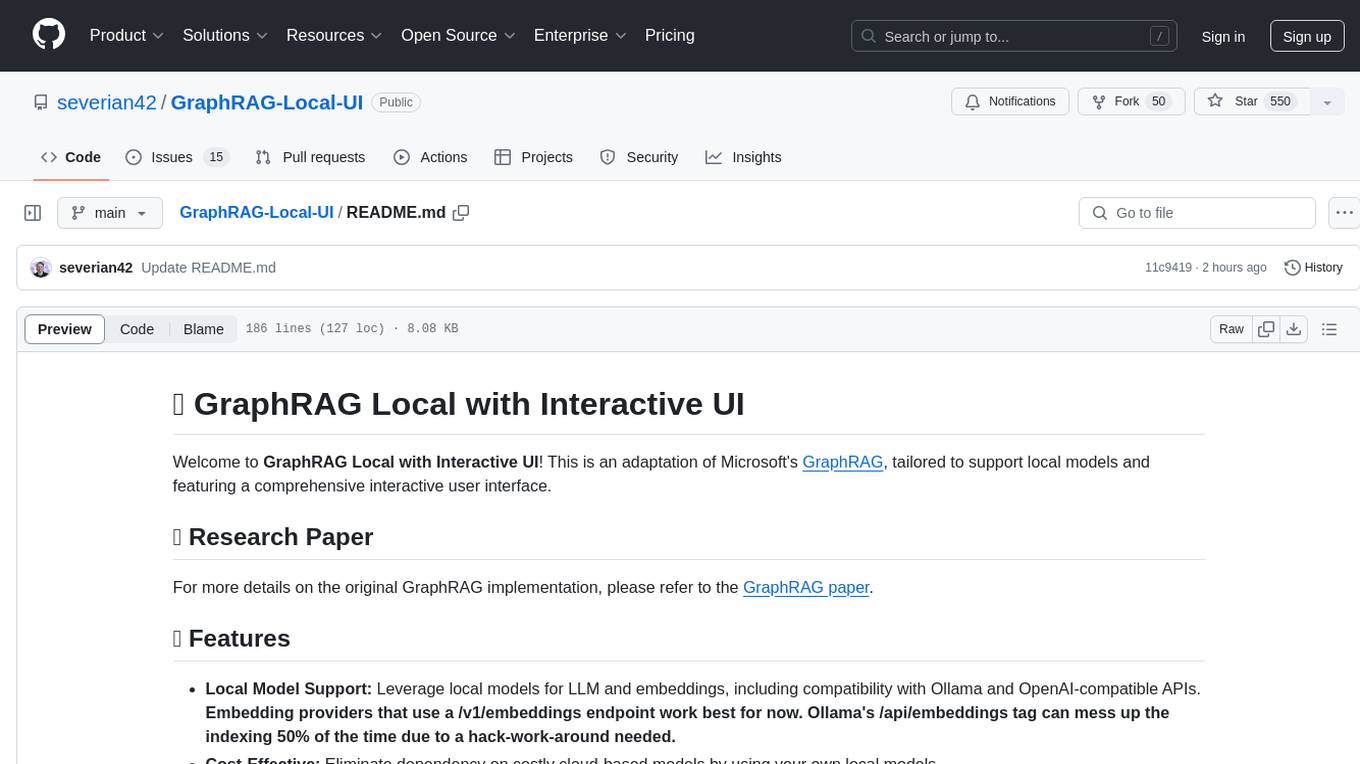
GraphRAG-Local-UI
GraphRAG Local with Interactive UI is an adaptation of Microsoft's GraphRAG, tailored to support local models and featuring a comprehensive interactive user interface. It allows users to leverage local models for LLM and embeddings, visualize knowledge graphs in 2D or 3D, manage files, settings, and queries, and explore indexing outputs. The tool aims to be cost-effective by eliminating dependency on costly cloud-based models and offers flexible querying options for global, local, and direct chat queries.
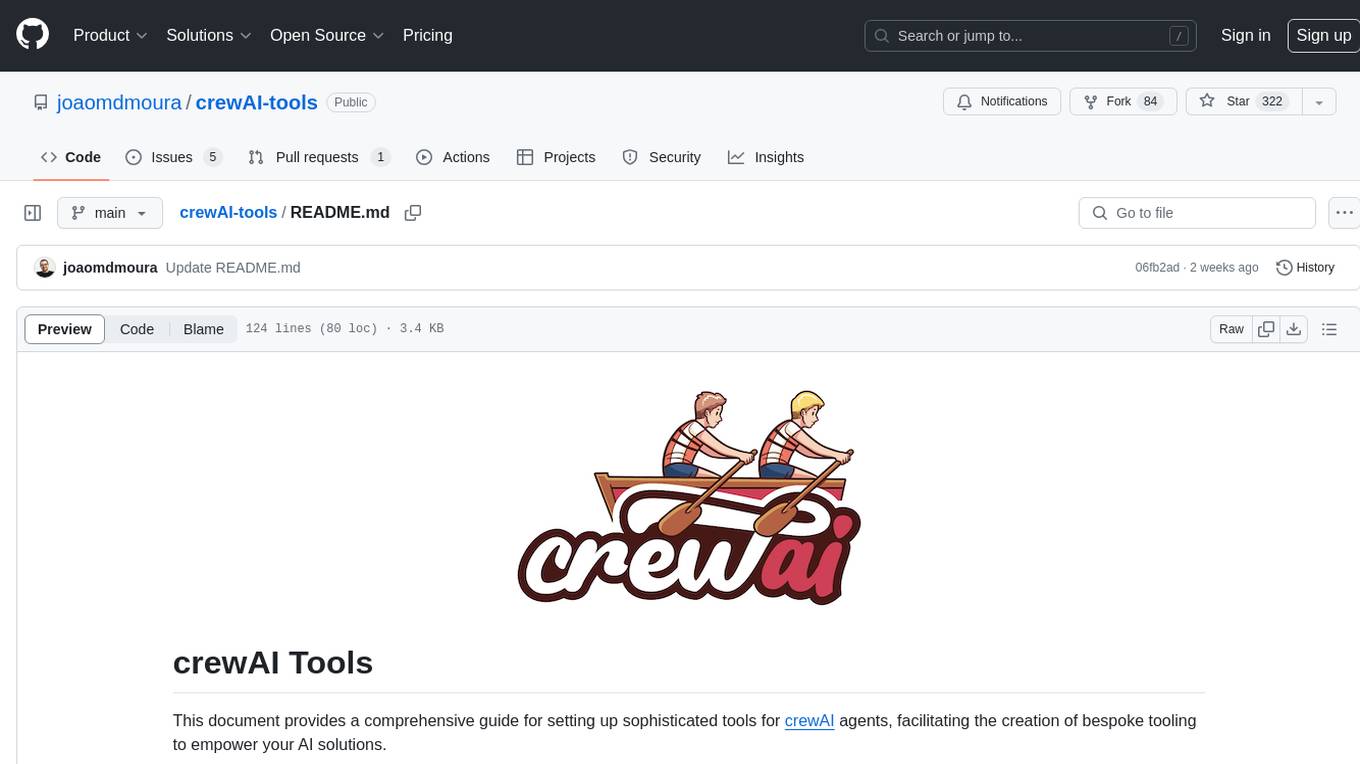
crewAI-tools
The crewAI Tools repository provides a guide for setting up tools for crewAI agents, enabling the creation of custom tools to enhance AI solutions. Tools play a crucial role in improving agent functionality. The guide explains how to equip agents with a range of tools and how to create new tools. Tools are designed to return strings for generating responses. There are two main methods for creating tools: subclassing BaseTool and using the tool decorator. Contributions to the toolset are encouraged, and the development setup includes steps for installing dependencies, activating the virtual environment, setting up pre-commit hooks, running tests, static type checking, packaging, and local installation. Enhance AI agent capabilities with advanced tooling.
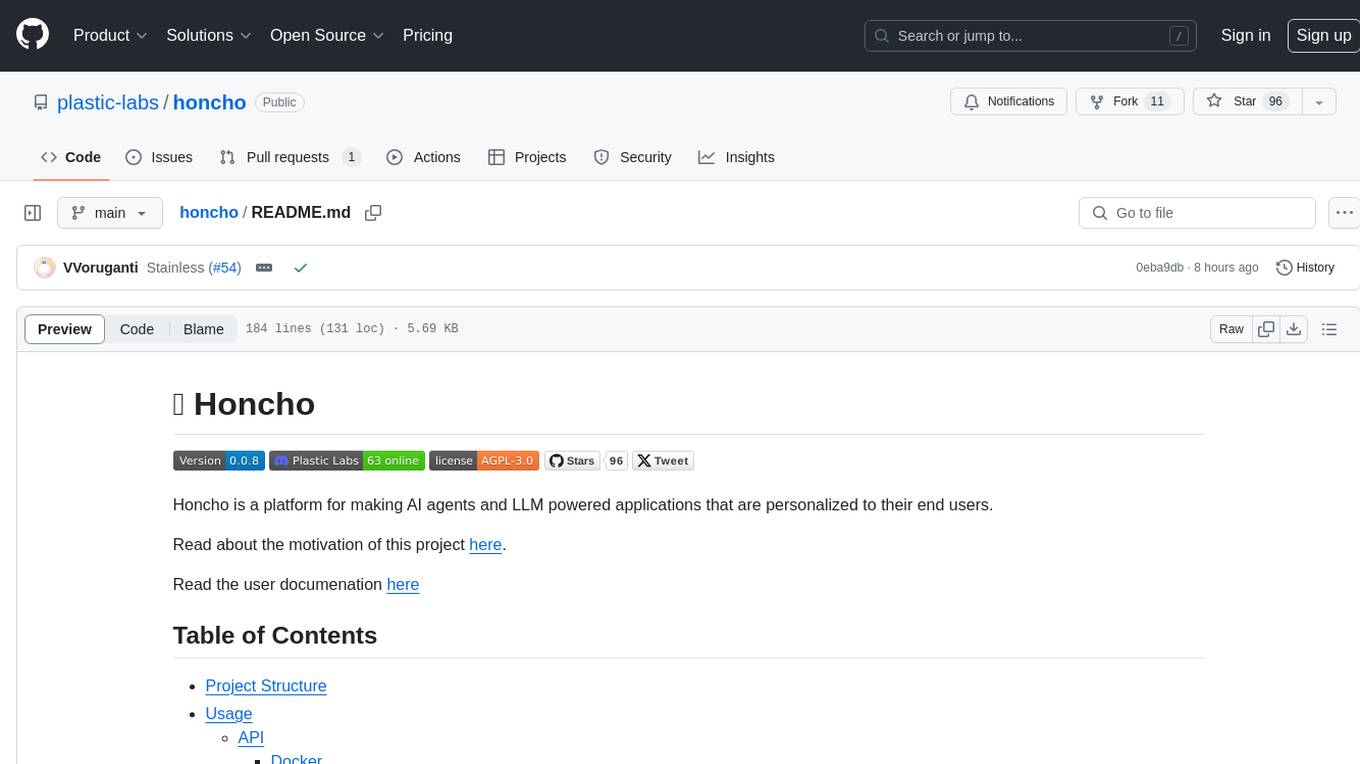
honcho
Honcho is a platform for creating personalized AI agents and LLM powered applications for end users. The repository is a monorepo containing the server/API for managing database interactions and storing application state, along with a Python SDK. It utilizes FastAPI for user context management and Poetry for dependency management. The API can be run using Docker or manually by setting environment variables. The client SDK can be installed using pip or Poetry. The project is open source and welcomes contributions, following a fork and PR workflow. Honcho is licensed under the AGPL-3.0 License.
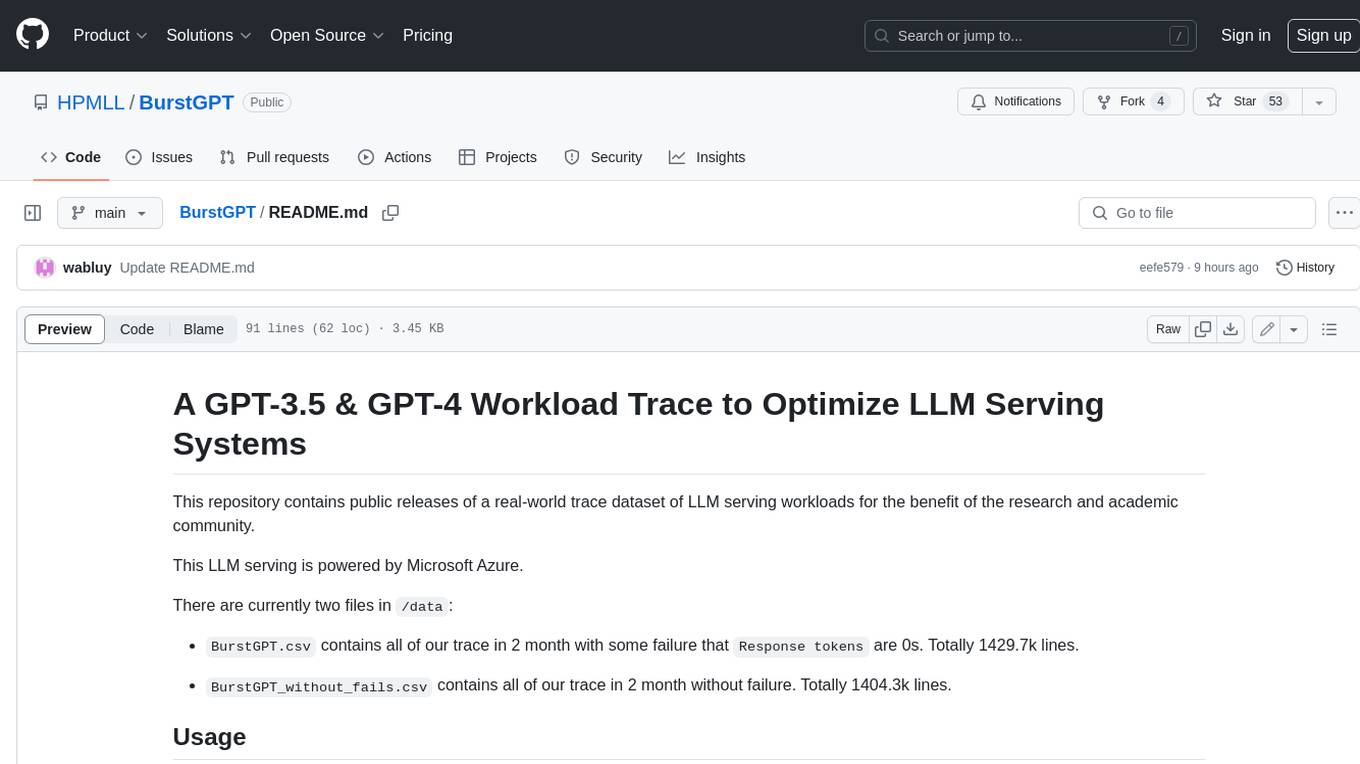
BurstGPT
This repository provides a real-world trace dataset of LLM serving workloads for research and academic purposes. The dataset includes two files, BurstGPT.csv with trace data for 2 months including some failures, and BurstGPT_without_fails.csv without any failures. Users can scale the RPS in the trace, model patterns, and leverage the trace for various evaluations. Future plans include updating the time range of the trace, adding request end times, updating conversation logs, and open-sourcing a benchmark suite for LLM inference. The dataset covers 61 consecutive days, contains 1.4 million lines, and is approximately 50MB in size.
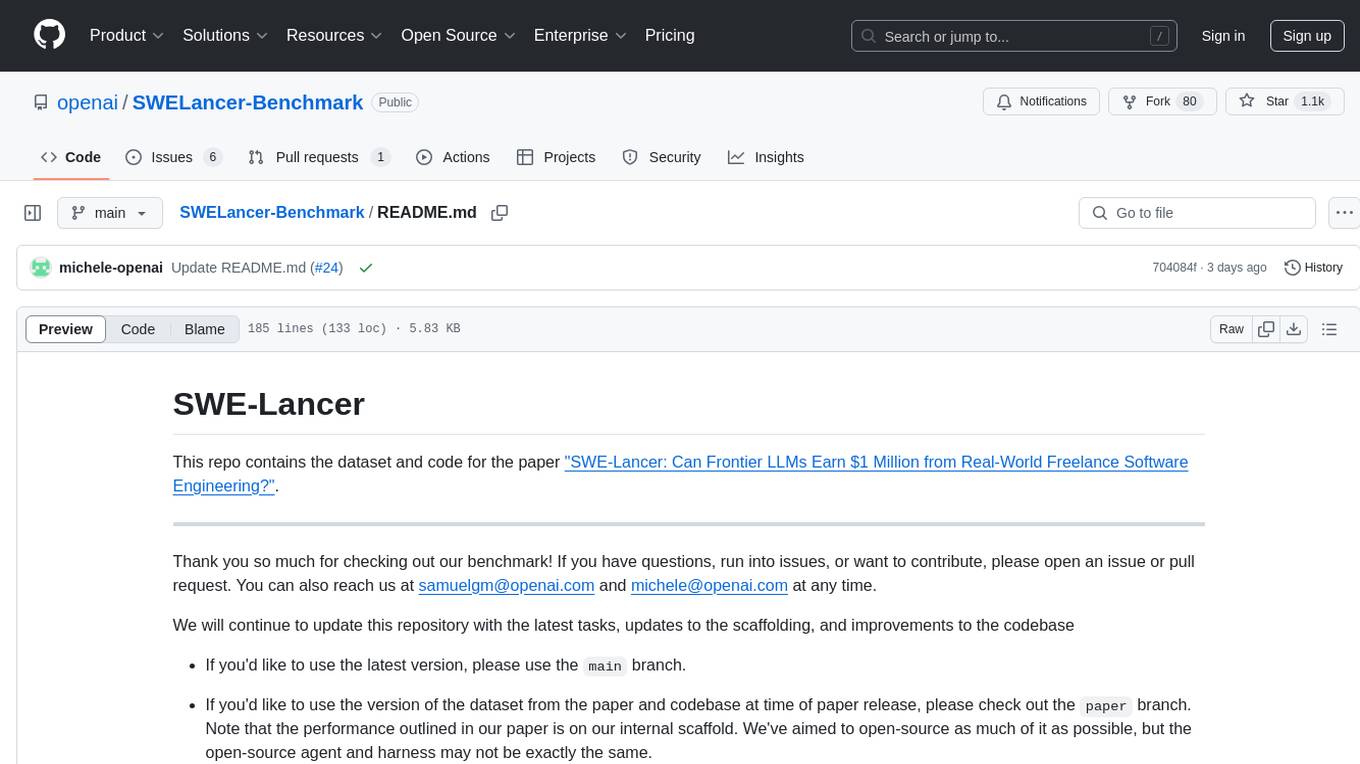
SWELancer-Benchmark
SWE-Lancer is a benchmark repository containing datasets and code for the paper 'SWE-Lancer: Can Frontier LLMs Earn $1 Million from Real-World Freelance Software Engineering?'. It provides instructions for package management, building Docker images, configuring environment variables, and running evaluations. Users can use this tool to assess the performance of language models in real-world freelance software engineering tasks.
For similar tasks
AiDE
AiDE is a lightweight framework for structuring AI-assisted development. It standardizes project context management, documentation, and collaboration, ensuring the assistant stays informed and productive throughout the project lifecycle. It offers drop-in simplicity with no dependencies, versatile usage for new and existing projects, and standardized templates for roadmaps, tasks, decisions, and sessions. The framework helps track project state, decision records, task management, and session tracking. It encourages best practices like starting each session by reviewing `.context` files, tracking task completion, documenting key decisions, and recording session summaries. The folder structure includes files for current state, roadmap, tasks, decisions, and sessions, with specific directories for active, completed, hold, and planned tasks. Contributions are welcome to enhance the usability of `.context`, and optional global rules for AI assistants are provided to optimize integration with the framework.
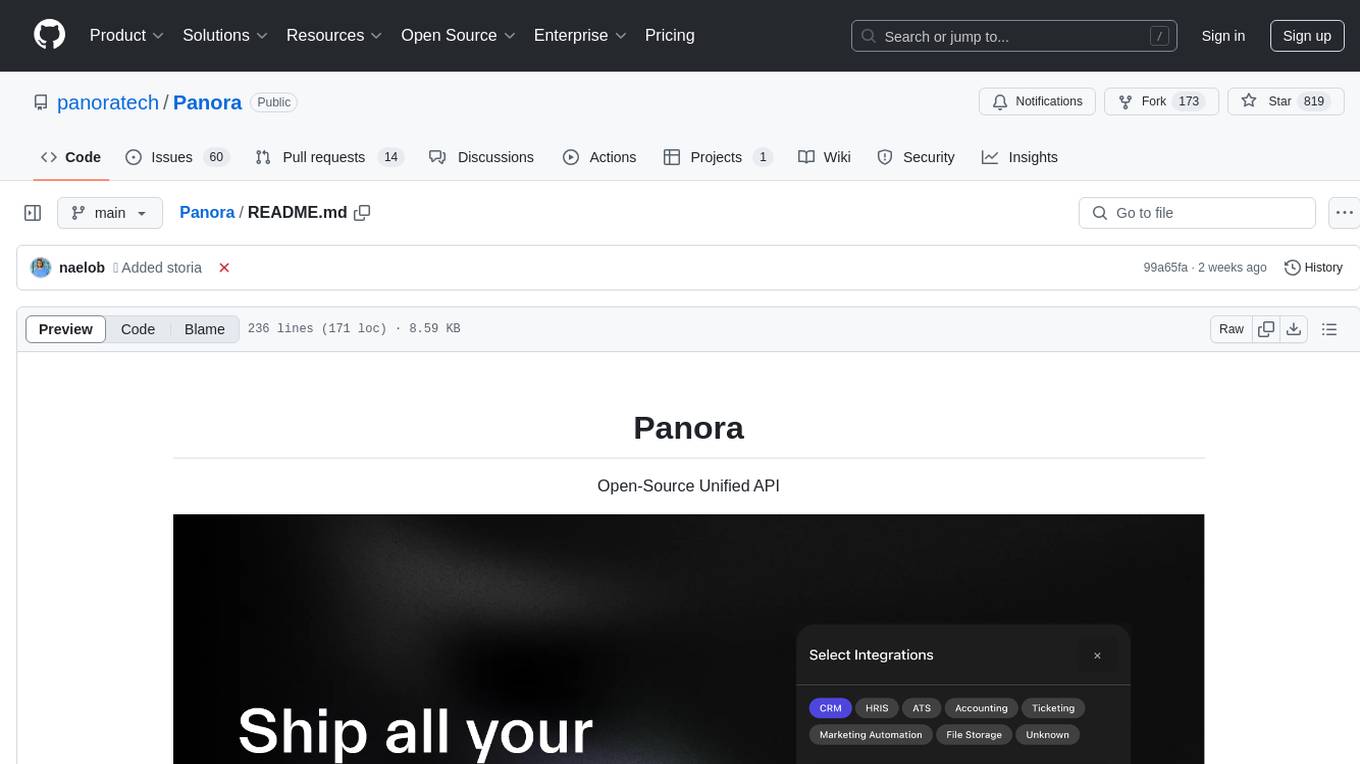
Panora
Panora is an open-source unified API tool that allows users to easily integrate and interact with various software platforms. It provides features like Magic Links for data access, Custom Fields for specific data points, Passthrough Requests for interacting with other platforms, and Webhooks for receiving normalized data. The tool supports integrations with CRM, Ticketing, ATS, HRIS, File Storage, Ecommerce, and more. Users can easily manage contacts, deals, notes, engagements, tasks, users, companies, and other data across different platforms. Panora aims to simplify data management and streamline workflows for businesses.
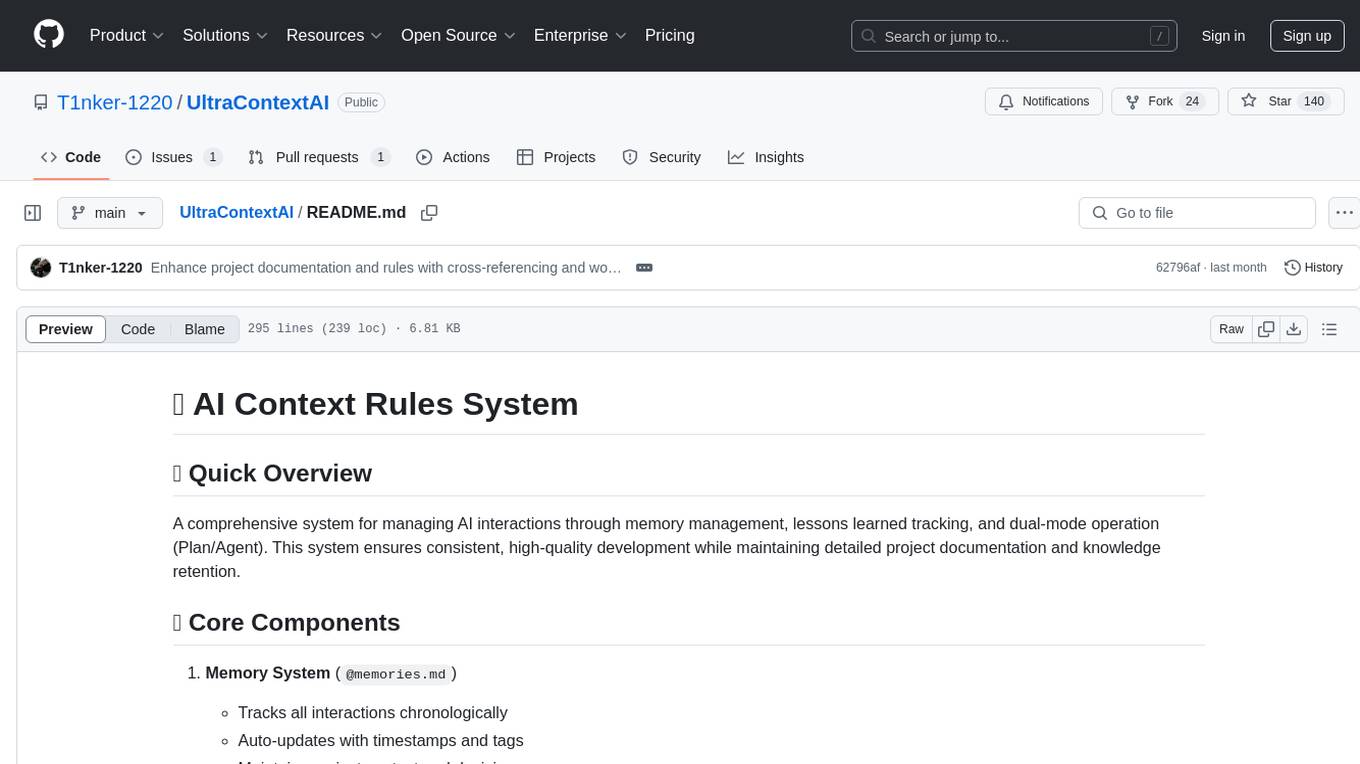
UltraContextAI
UltraContextAI is a comprehensive system for managing AI interactions through memory management, lessons learned tracking, and dual-mode operation (Plan/Agent). It ensures consistent, high-quality development while maintaining detailed project documentation and knowledge retention. The system includes core components like Memory System, Lessons Learned, and Scratchpad. It operates in Plan Mode for information gathering and planning, and Agent Mode for execution. Users can create new features, fix bugs, set up projects, and update documentation using the system. Real-time updates, version control, and cross-referencing are key aspects of the system. Best practices include memory management, task tracking, and documentation standards. Tips and tricks are provided for handling AI and Cursor issues. Contributions to the system are welcome, and it is licensed under MIT License.
For similar jobs

sweep
Sweep is an AI junior developer that turns bugs and feature requests into code changes. It automatically handles developer experience improvements like adding type hints and improving test coverage.

teams-ai
The Teams AI Library is a software development kit (SDK) that helps developers create bots that can interact with Teams and Microsoft 365 applications. It is built on top of the Bot Framework SDK and simplifies the process of developing bots that interact with Teams' artificial intelligence capabilities. The SDK is available for JavaScript/TypeScript, .NET, and Python.

ai-guide
This guide is dedicated to Large Language Models (LLMs) that you can run on your home computer. It assumes your PC is a lower-end, non-gaming setup.

classifai
Supercharge WordPress Content Workflows and Engagement with Artificial Intelligence. Tap into leading cloud-based services like OpenAI, Microsoft Azure AI, Google Gemini and IBM Watson to augment your WordPress-powered websites. Publish content faster while improving SEO performance and increasing audience engagement. ClassifAI integrates Artificial Intelligence and Machine Learning technologies to lighten your workload and eliminate tedious tasks, giving you more time to create original content that matters.

chatbot-ui
Chatbot UI is an open-source AI chat app that allows users to create and deploy their own AI chatbots. It is easy to use and can be customized to fit any need. Chatbot UI is perfect for businesses, developers, and anyone who wants to create a chatbot.

BricksLLM
BricksLLM is a cloud native AI gateway written in Go. Currently, it provides native support for OpenAI, Anthropic, Azure OpenAI and vLLM. BricksLLM aims to provide enterprise level infrastructure that can power any LLM production use cases. Here are some use cases for BricksLLM: * Set LLM usage limits for users on different pricing tiers * Track LLM usage on a per user and per organization basis * Block or redact requests containing PIIs * Improve LLM reliability with failovers, retries and caching * Distribute API keys with rate limits and cost limits for internal development/production use cases * Distribute API keys with rate limits and cost limits for students

uAgents
uAgents is a Python library developed by Fetch.ai that allows for the creation of autonomous AI agents. These agents can perform various tasks on a schedule or take action on various events. uAgents are easy to create and manage, and they are connected to a fast-growing network of other uAgents. They are also secure, with cryptographically secured messages and wallets.

griptape
Griptape is a modular Python framework for building AI-powered applications that securely connect to your enterprise data and APIs. It offers developers the ability to maintain control and flexibility at every step. Griptape's core components include Structures (Agents, Pipelines, and Workflows), Tasks, Tools, Memory (Conversation Memory, Task Memory, and Meta Memory), Drivers (Prompt and Embedding Drivers, Vector Store Drivers, Image Generation Drivers, Image Query Drivers, SQL Drivers, Web Scraper Drivers, and Conversation Memory Drivers), Engines (Query Engines, Extraction Engines, Summary Engines, Image Generation Engines, and Image Query Engines), and additional components (Rulesets, Loaders, Artifacts, Chunkers, and Tokenizers). Griptape enables developers to create AI-powered applications with ease and efficiency.